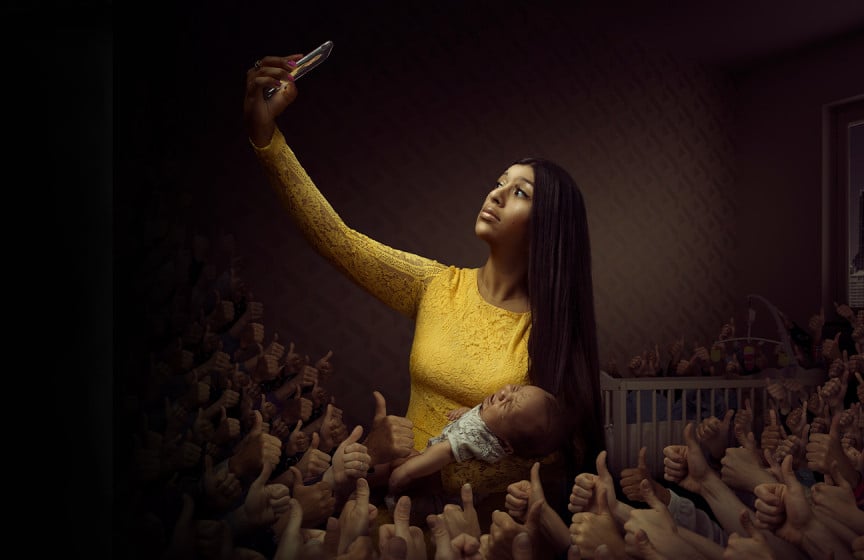Connections: In Depth
- Connective Liberation
- Share

Connective Liberation
Social media has the power to fuel—or foil—social movements.
A life, brutally ended, and a simple action by a 17-year-old Black girl sparked the largest social movement in U.S. history, and offered lessons about the role of a rapidly changing digital landscape in movements for liberation.
On May 25, 2020, Darnella Frazier witnessed a crime being committed by the men sworn “to protect with courage, to serve with compassion.”
Minneapolis police officer Derek Chauvin had buried his knee into George Floyd’s neck and was slowly killing him. Hearing Floyd beg for his life, Frazier filmed the officer who was pinning him down, knee to neck. Floyd managed to eke out the words “I can’t breathe.” Ten minutes later, a stretcher carried away his lifeless body.
In the wee hours of the next morning, Frazier posted her video on Facebook and Instagram with the caption: “they killed him right in front of cup foods. No type of sympathy #POLICEBRUTALITY.”
The Minneapolis Police Department claimed that Floyd’s death resulted from a “medical incident,” but the now globally circulating video exposed their lies. After Floyd’s murder, the #BlackLivesMatter hashtag peaked at 1.2 million tweets per day, according to a 2023 Pew Research study, while a count by the Institute of Strategic Risk Management suggested there were nearly 48 million #BlackLivesMatter tweets between May 26 and June 7, 2020.
“I can’t breathe” became an anthem for millions who braved the COVID-19 pandemic and poured into the streets to protest the injustice meted out on yet another Black person. In the U.S. there were more than 4,700 protests during that time period, an average of 140 a day, followed by anti-racism protests in 93 countries and territories.
The speed with which people revolted and demanded change may not have been possible without social media and the connecting, communicating, sharing, and informing that it enabled. Social media brought “together large numbers of people and ideas, and groups across potentially large amounts of [geographic] distance to engage in collective acts,” explains Ramesh Srinivasan, a professor of information studies at the University of California, Los Angeles, and the founder of the UC Digital Cultures Lab. The speed of communication “enables people to contest certain types of power or [to] reclaim power.”
Frazier’s video, the hashtags, and the resulting demonstrations and organizing they fueled raised awareness about the brutality Black Americans endure, particularly at the hands of police. But they did more than that. Together, as part of the court proceedings, they helped produce a rare guilty verdict of a police abuser. Advocates also won changes to police training, mandatory body cameras, bans on no-knock warrants, and federal oversight in problematic cities, including Minneapolis.
These wins set BLM apart from other social-media-driven movements that failed to result in concrete changes.
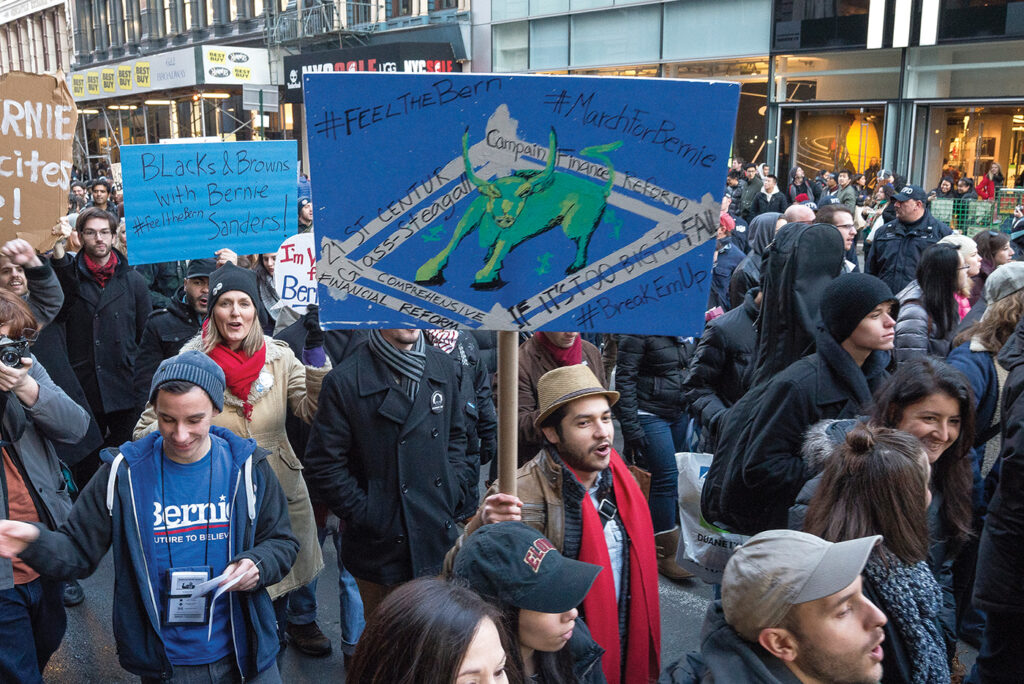
From Encampments to Presidential Policy
The 2011 Occupy Wall Street movement might have fallen into this category if not for a small group of its participants using their combined political and social media savvy to effectuate long-term change. Social media helped propel “We are the 99%!”—a slogan symbolizing disproportionate wealth and power held by 1% of the world—to reach and resonate with masses of people. Activists joined encampments throughout the world to demand a fairer economic and political system.
However, it still took years after the demonstrations and encampments closed down for Occupiers to enter the halls of power. As Michael Levitin documented in his 2021 book, Occupy Generation: Reawakening American Democracy, after Sen. Elizabeth Warren declined to run for president in 2016, activist Charles Lenchner queried 60,000 Warren supporters on the Occupy listserv about whom else they might recruit. There was an emphatic answer: “Support Bernie” Sanders.
By the time Sanders launched his presidential campaign, People for Bernie, which Lenchner co-founded, had already recruited thousands of volunteers. With the spirit of Occupy’s decentralization guiding it, the campaign grew and flourished.
Social justice activists, scholars, and others joined because “that was our best shot to change a lot of things,” says Srinivasan, who worked as a surrogate on the Sanders campaign.
Although both Sanders’ 2016 and 2020 bids failed, President Joe Biden’s allies joined with Sanders to develop and agree on policies before Biden took office. Still, the seemingly intractable problems of the political economy have persisted, with economic inequality worsening, indicating that without engagement within political institutions, social media as a tool for liberation remains limited in promise.
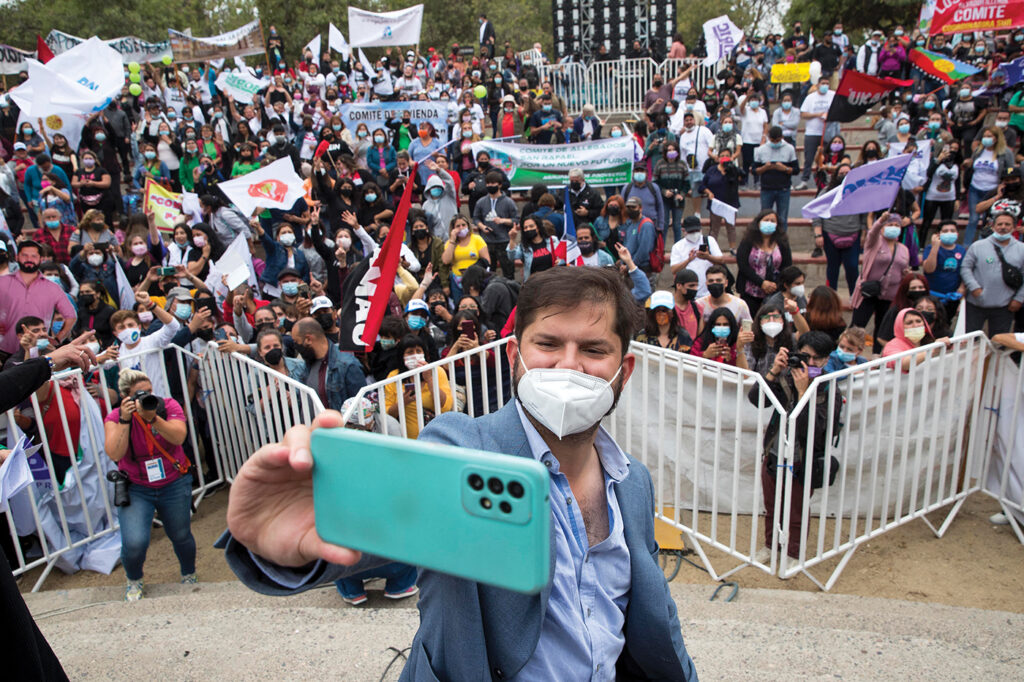
A Tool for Democracies Fails in Dictatorships
In 2011, Chilean students used social media to protest economic and educational inequality. Some movement leaders “actually ended up taking state power eventually,” says Srinivasan. The so-called “penguin revolutionaries” won elected offices, including at the highest position: In 2021, 36-year-old student leader Gabriel Boric was elected Chile’s president.
However, such tools have not worked as well to foster democracy in authoritarian countries. In 2009, the Iranian regime crushed the country’s grassroots Green Movement, which was protesting voter fraud and demanding the removal of President Mahmoud Ahmadinejad. Similarly, the Arab uprisings in Egypt, Tunisia, and Syria failed to produce substantive long-term democratic change. In 2020, China crushed Hong Kong’s “Umbrella Movement,” which was demanding free and fair elections, and which enthusiastically used both traditional and social media to mobilize.
Even if demonstrators in Hong Kong, Iran, and those nations roiled by the Arab uprisings failed in the short term to achieve liberation, social media usage helped the international community to learn about the desires, struggles, and commitments of ordinary people to be free from corruption and oppression. Like a modern-day SOS to the world, social media enabled these movements to have witnesses and allies that they otherwise may not have had.
In 2022, Iranians revolted again after 22-year-old Jina Mahsa Amini died while in custody of the country’s morality police.
The “Woman, Life, Freedom” movement sprung to life to protest the regime’s brutality. The hashtag #MahsaAmini reached tens of millions of people across Twitter, Facebook, Instagram, and TikTok, and was tweeted and retweeted more than 250 million times in Persian and more than 50 million times in English in the first month after her death.
If knowledge is power, these technological tools are slowly helping people build the latter through real-time documentation, dissemination, hacked evidence, and pleas from all corners of the world, calling out to each other and building a global community.
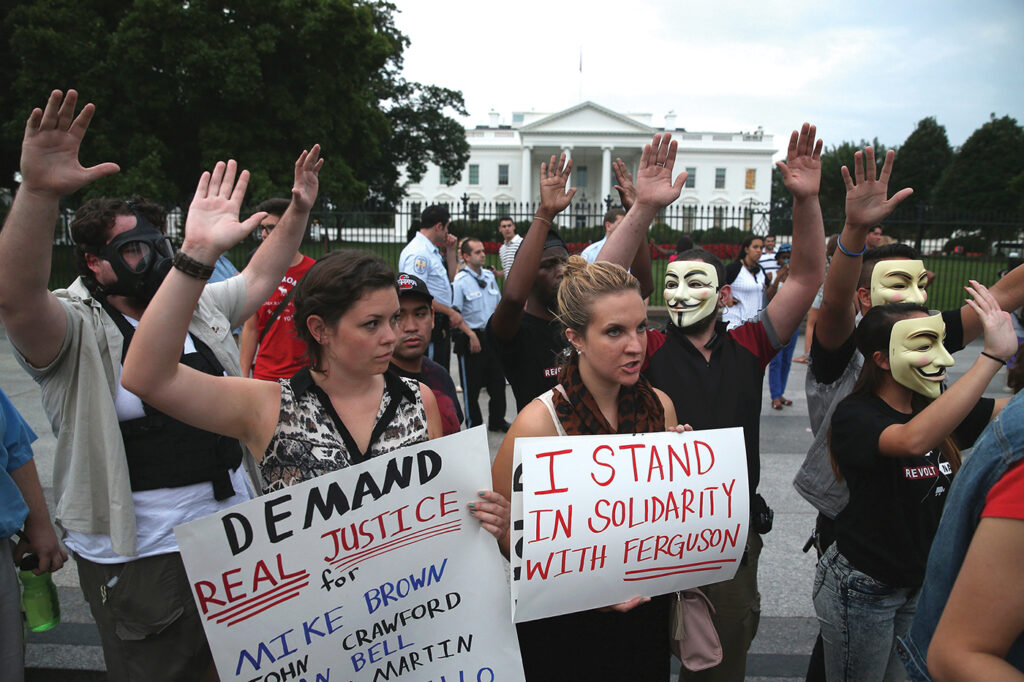
Uniting Frayed Communities
Early in its activism, the hacker group Anonymous targeted the Church of Scientology by leaking a video of actor and scientologist Tom Cruise hosting a church event in 2008. It was the first of many such acts of digital activism.
After police shot and killed Michael Brown in Ferguson, Missouri, in 2014, members of Anonymous temporarily disabled the city’s website. In 2015, Anonymous members released personal details of alleged Ku Klux Klan members, and when George Floyd was murdered, members hijacked a United Nations agency page to memorialize him. After Russia invaded Ukraine, Anonymous members attacked Russian communications infrastructure, paralyzing the institution that controlled Russian satellites, according to a 2022 study published in Future Human Image.
Srinivasan sees the work of Anonymous and related groups as “a form of social, collective action” and the group as the “hacker wing of the protest movement.” In contrast, legal organizations, including the Center for Constitutional Rights, the American Civil Liberties Union, the Electronic Frontier Foundation (EFF), and related legal groups, law firms, and individual lawyers act as the movements’ legal arm, helping protestors maintain free channels of communication.
For example, the EFF advocated for international human rights movements to have access to vital communication tools that we may take for granted, including Google Chrome, Google Earth, Java, and hosting services, which are often denied by authoritarian governments. Their lawyers have also sued corporations—or as the EFF calls them, “repression’s little helpers”—for providing repressive regimes with surveillance technology that abets human rights violations by surveilling, tracking, and imprisoning journalists, activists, and ethnic or religious minorities.
Scholars like Srinivasan see such digital repression as perhaps the greatest obstacle to social media as an instrument for liberation. In these cases, authoritarian governments and corporations use these same technologies as “tools of disinformation to manipulate and disrupt … to track and infiltrate … to pose as double agents … pushing out deep amounts of disinformation campaigns and hateful campaigns,” he explains.
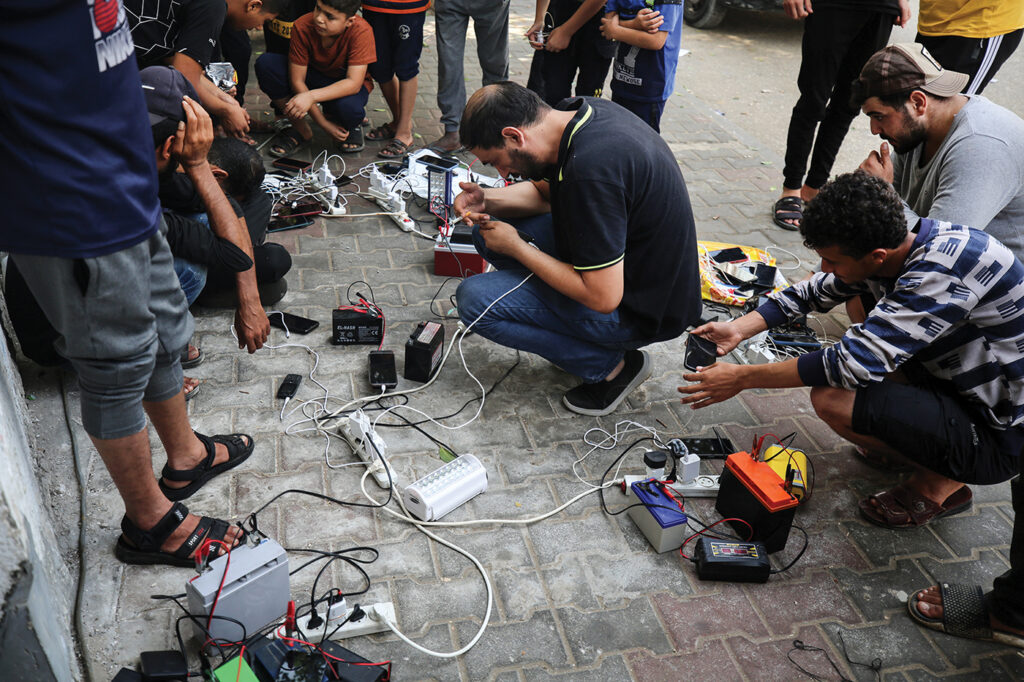
During the recent Israel-Hamas war, Israel cut Gazans’ internet access, on which they relied to find safety from the bombings. Palestinians then accused social media platforms of algorithmic “shadowbanning” to demote their stories. In spite of its limitations, social media can connect diaspora communities long torn apart by genocides, wars, or imperialism to maintain their connection, traditions, and languages. Before Elon Musk’s takeover of the platform now known as X, Black Twitter, a virtual community of Black diasporans, enabled robust discourse and collective action on a wide range of issues, including police brutality and racism.
As Jennifer Brinkerhoff, a professor of public administration and international affairs at the George Washington University, noted in her 2009 book, Digital Diasporas: Identity and Transnational Engagement, Afghans, Egyptian Copts, Somalis, Nepalese, and Tibetans have all used digital tools to form virtual nationhood while scattered across the globe. Torn apart by war, migration, or other forces, they can maintain a sense of belonging, identity, and values through the internet even when they have no physical access to their communities or historic lands.
In 2020, when Azerbaijan and Turkey joined together to seize indigenous lands from the Armenians of Artsakh (internationally known as Nagorno-Karabakh), an already globally scattered Armenian diaspora organized partly through social media to aid the Armenian survivors of torture, war, and ethnic cleansing. In addition to organizing demonstrations, some Armenian diasporans met via social media to help launch the Center for Truth and Justice, an organization to help survivors seek redress through volunteer lawyers.
As the refugees fled to Armenia, the diasporan charitable arms, such as the Armenia Fund and Armenian Relief Society, used social media to organize delivery of food, clothing, and blankets.
In addition to these more visible, global movements, Indigenous people and smaller communities have seized upon technologies to assert their self-determination and protect their sovereignty, ways of life, values, and land. With “simple mapping tools” created by organizations like Digital Democracy, “communities around the world can map their lands in ways that allow them to … show that the land is theirs to protect” to institutions like courts and other political bodies, Srinivasan explains.
He adds that some have even built their own internet networks, so “they can organize and use these technologies to network in whatever ways they want.” This includes freedom from algorithms, surveillance, “corporate capitalism … [and] the dog-eats-dog kind of mentalities of constantly being in an antagonistic relationship with one another.”
Some of these efforts have been supported by technology leaders who have parted ways with their earlier corporate bosses. Justin Rosenstein, formerly of Google and Facebook, created Asana, a collaborative software company, and the nonprofit One Project, which supports communities seeking to mitigate economic, climate, and governance crises. Yet, as long as corporations, regimes, and anti-democratic movements use technology and social media to blunt change through violent or insidious means, social justice movements need legal and institutional protections, including what Srinivasan calls a “digital bill of rights.” But more tools are necessary to ensure progress while protecting communities from the harms of technology.
As Srinivasan says, “Our understandings of technology and how it may support living beings around the planet have been co-opted by big tech, its vagaries, anxieties, and fantasies. And as our world becomes more technologized—mediated by data and computing than ever before—it’s high time to return the domain of technology to the values that make us shine as human beings: our capacity for care for one another, the possibility for us to repair our planet, and the ability to stand up for justice, rights, and a planetary, life-affirming mission. It’s time to take those steps.”
|
Maria Armoudian
is a lecturer at University of Auckland and author of Lawyers Beyond Borders, Kill the Messenger, and Reporting From the Danger Zone.
|

